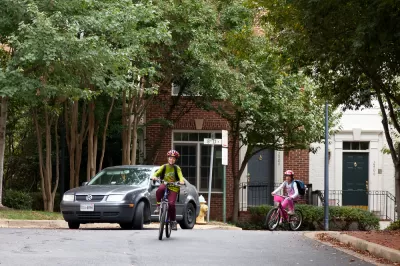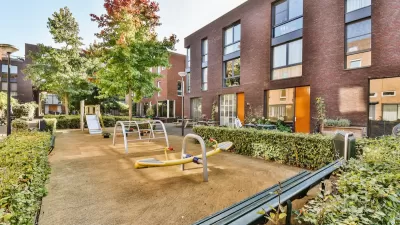Without children at the center of activity, the urban neighborhoods of today offer little compared to the ideals expressed by Jane Jacobs, according to this strongly worded critique of contemporary urbanism.

Benjamin Schwarz begins a critique of what he calls the Vibrant Urban Neighborhood with the following description of his subject: "its standard-issue bike shops and vintage clothiers, its 'authentic' live-work spaces and dive bars, its predictable purveyors of vinyl records and locally-sourced foodstuffs, its de rigueur venues for generically hip 'live music,' its uniform throngs of overwhelmingly unmarried and childless active or aspiring knowledge workers ritualistically intoning the shibboleth of 'diversity'…"
Instead of the renaissance many urbanists describe, the increasing popularity of Vibrant Urban Neighborhoods, or VUNs, "merely demonstrates that consumption and entertainment have become the dominant means of self-definition and of what passes for political expression—and, concomitantly, it signifies not the triumph of urban life but of our crabbed vision of the promise and potentialities of neighborhood and community."
To further describe where the urban renaissance has gone wrong, Schwartz compares contemporary urban neighborhoods to those extolled by Jane Jacobs. According to Schwartz, children are the component most lacking from contemporary neighborhoods. In fact, the bulk of the argument contained in the column is devoted to reframing the importance of children in some of Jacobs's most famous passages, and achieving an accurate comparison of the "urban villages" of her day with the VUNs of ours.
By discussing children, Schwartz also enters into an ongoing debate about the long-term appeal of urban environments to families as they age and grow. Planetizen blogger Michael Lewyn recently wrote about the complex demographic trends unfolding for families in and around cities. Other recent stories have lamented the lack of priority given to children in setting an urban agenda in Oakland, California, and provided statistical analysis of the U.S. cities with the most children.
FULL STORY: Cities Without Children

Planetizen Federal Action Tracker
A weekly monitor of how Trump’s orders and actions are impacting planners and planning in America.

San Francisco's School District Spent $105M To Build Affordable Housing for Teachers — And That's Just the Beginning
SFUSD joins a growing list of school districts using their land holdings to address housing affordability challenges faced by their own employees.

The Tiny, Adorable $7,000 Car Turning Japan Onto EVs
The single seat Mibot charges from a regular plug as quickly as an iPad, and is about half the price of an average EV.

Seattle's Plan for Adopting Driverless Cars
Equity, safety, accessibility and affordability are front of mind as the city prepares for robotaxis and other autonomous vehicles.

As Trump Phases Out FEMA, Is It Time to Flee the Floodplains?
With less federal funding available for disaster relief efforts, the need to relocate at-risk communities is more urgent than ever.

With Protected Lanes, 460% More People Commute by Bike
For those needing more ammo, more data proving what we already knew is here.
Urban Design for Planners 1: Software Tools
This six-course series explores essential urban design concepts using open source software and equips planners with the tools they need to participate fully in the urban design process.
Planning for Universal Design
Learn the tools for implementing Universal Design in planning regulations.
Smith Gee Studio
City of Charlotte
City of Camden Redevelopment Agency
City of Astoria
Transportation Research & Education Center (TREC) at Portland State University
US High Speed Rail Association
City of Camden Redevelopment Agency
Municipality of Princeton (NJ)





























